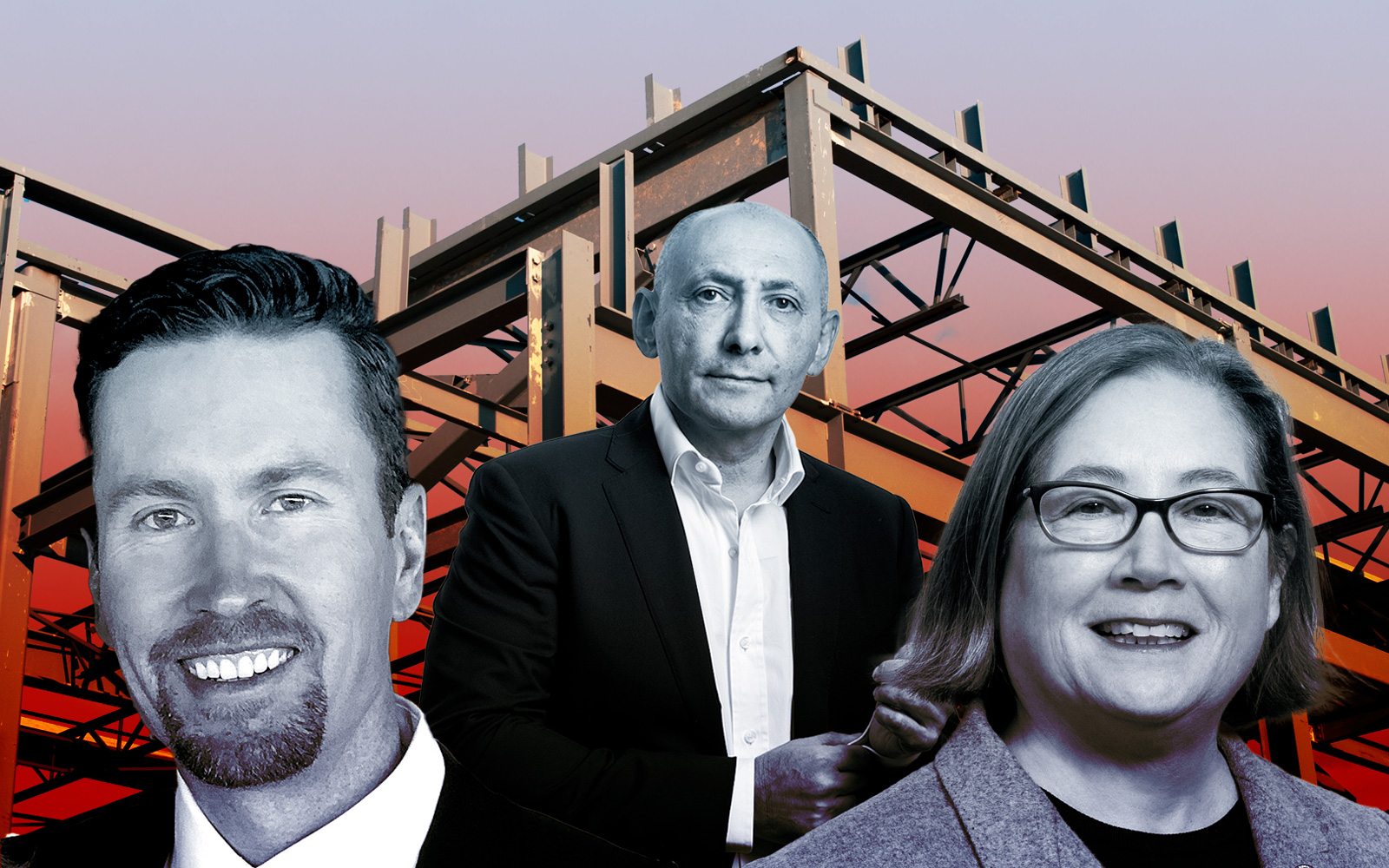
“A good deal for both sides”: WS Communities, Santa Monica nearing builder’s remedy settlement
Trending
Bye builder’s remedy: Santa Monica approves settlement with WSC
Developer leverages legal strategy for streamlined approvals and density bonuses

WS Communities’ Scott Walter, NMS Properties’ Neil Shekhter and City of Santa Monica mayor Gleam Davis (Santa Monica, Getty, Neil Shekhter via Kevin Scanlon)
More than six months after the unconventional builder’s remedy strategy rewrote the rules for development in California, the proposals that started it all are suspended in Santa Monica.
The shift comes from a first-of-its-kind settlement deal. On Tuesday evening, the Santa Monica City Council unanimously approved an agreement with WS Communities (WSC) under which the developer has agreed to pull most of its 14 builder’s remedy applications — including for one particularly large project on Nebraska Avenue — in exchange for expedited processing and additional incentives on potential new projects that fit with the city’s updated, more pro-density zoning code.
The deal also settles additional outstanding litigation between the developer and the city, including allegations of tenant harassment by WSC and the developer’s complaints related to the city’s leasing rules.
“Really we’re doing this to help get rid of the builder’s remedy projects,” Santa Monica Councilwoman Caroline Torosis said during the meeting. “We heard loud and clear from the community that they were very concerned that there were over 4,000 units that were going to come to our city without any form of local control.”
Deal details
The settlement deal applies to 13 of the 14 builder’s remedy applications WSC initially filed last fall, while Santa Monica was out of state compliance on its Housing Element, a document that outlines the city’s housing plan. Builder’s remedy, a decades-old legal provision that had been all but forgotten until last year, serves as a penalty for cities that fail to meet their state-mandated deadline for the element, allowing developers to bypass local zoning entirely as long as the projects meet affordability requirements.
The Santa Monica deal came after months of negotiations between WSC and the city, with different impacts depending on the site. At nine of the properties, it paves the way for WSC to file new projects that fit with the city’s updated housing code, and at 3030 Nebraska — where WSC had originally filed for a 15-story, 2,000-unit apartment project that drew the ire of some residents and local officials — it allows for a lot reconfiguration that could allow the developer to file up to four smaller projects.
At those sites, the agreement stipulates that the city must streamline entitlements for the developer’s new, zoning-compliant applications. Smaller projects would undergo a total processing time of a maximum 150 days, and larger projects would face a maximum time of 210 days.
“That is lightning turnaround time,” said Dave Rand, an attorney for WSC who negotiated the deal. “And that’s really the point, because the builder’s remedy projects were all going to have to do likely extensive CEQA [reviews] … public hearings, uncertainty of the outcome, likely litigation — and now we’re talking about a permit in hand in maybe 150 to 210 days.”
The nine sites had all been upzoned for more development in the city’s recent Housing Element update — a major turn toward density that was likely accelerated by last fall’s builder’s remedy drama and also made the new deal possible. On the remaining three properties that are subject to the agreement, which fall under the city’s still-more restrictive residential zoning, WSC agreed to withdraw its builder’s remedy applications without refiling any new applications.
The deal also provides other incentives on the sites where WSC can refile new projects, including a lower affordability requirement, a higher parking maximum and the ability to pool affordable units into an off-site project. It would also allow WSC to count those off-site units for a state density bonus program that typically requires on-site units — a key pot sweetener because WSC could pursue up to 50 percent added density through the state bonus.
The agreement, Rand emphasized, means that actual housing, including affordable units, is likely to go up much faster in a city where it’s badly needed.
“I’m pleased with it,” the lawyer said. “Both as a housing advocate and as an attorney for this particular developer, because I like to actually work on projects that happen and get built. … Fighting just costs everybody money and time.”
Unknown unit count
WSC has not yet filed new plans for the sites, so the exact size and unit counts of the replacements for its builder’s remedy applications remains unclear. Last month, in something of a preview of the deal that was already in the works, the developer listed several of the sites for sale, with marketing materials that didn’t mention builder’s remedy but instead promoted hypothetical projects that relied on Santa Monica’s updated zoning and the 50 percent state density bonus.
WSC’s remaining builder’s remedy project, at 1433 Euclid Avenue, was initially filed as a 12-story, 190-unit project. Last year the city also received two other relatively modest builder’s remedy applications, including one from Leo Pustilnikov, the developer embroiled in a different saga over a major project in Redondo Beach.
The council’s unanimous vote in favor of the settlement came after more than a dozen public comments, including several from people representing the interests of a school near the Nebraska Avenue site who urged the council to delay the vote.
The settlement — which demonstrates the potential of builder’s remedy as a powerful leveraging tool — is likely to resonate far beyond Santa Monica, as housing-adverse jurisdictions around the state continue grappling with the legal provision and in some cases dig in to fight against state authority.
Read more

Builder's justice: How a legal loophole could reshape California

“Destroying our city”: Huntington Beach rejects state housing plan




